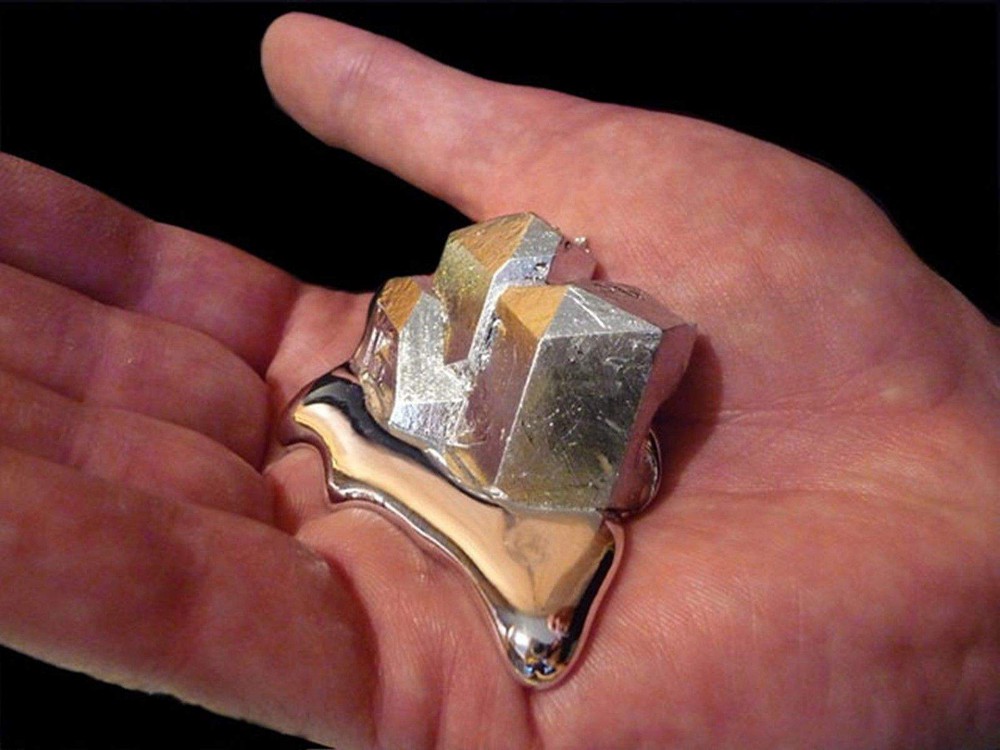Many units around the world are urgently ordering gallium to prevent major “fluctuations” that may come in the future.
![]()
One of the big changes that people are witnessing at the present time is the electric vehicle revolution. In the past, the press often talked about electric cars as a new consumer trend, but in fact, electric cars are like a step forward to protect the environment.
Many countries and regions have drafted plans to introduce electric vehicles into public transport as soon as possible. For example, the European Union has passed a policy banning the sale of vehicles using internal combustion engines from 2035, or the state of California in the US is also discussing a plan similar to the European Union.
At first glance, many people may think that electric cars are similar to gasoline cars, but in fact, to make an optimal and efficient electric car model, manufacturers must redesign or design many new parts. parts, the most important of which are the charging system and battery pack
MELTS IN THE HANDS, HOLD THE “HEART” OF THE ELECTRIC VEHICLE
While manufacturers can improve electric motors quickly, on the other hand, batteries and charging systems are not developing at the same pace. Lithium-ion battery technology first appeared on a Sony commercial product in 1991 after about 20 years of research; From then until now, the basic technology of this battery has not had too many improvements.
For that reason, electric vehicle manufacturers are currently extremely eager to find solutions that can help make electric vehicles more optimal and lighter, thereby cutting production costs. Suddenly, Gali could save manufacturers a lot of headaches.

Gallium has a low melting point and can melt on human hands.
Gallium is a type of metal that makes up only 0.0019% of the Earth’s crust, and has quite interesting physical properties: it melts at 29 o C, so it can completely liquefy right in human hands. The compound Gallium Nitrite (GaN) is a semiconductor, that is, a substance that can conduct or insulate electricity depending on conditions.
Gallium Nitrite is an important material for electric vehicles. This compound is used to convert the alternating current used by the electric motor and the direct current supplied by the battery pack, or used to regulate the voltage – for example from 240 volts in level 2 charging up 400 or 800 volts for the battery pack, or down to 12 volts for light bulbs, seat heaters…
Compared to the commonly used silicon semiconductors, research has shown that Gallium Nitrite can operate 20 times faster, has the ability to conduct 3 times more current, and shortens charging time 3 times. but the size and mass are only half that. Because of this characteristic, Gallium Nitrite is becoming a research target for many manufacturers, considered the future of electric vehicles.
However, the world’s No. 1 gallium supplier recently made a move that makes units researching gallium applications have a headache.
THE RACE TO FIND SUPPLY
In fact, gallium almost does not exist freely in nature. Gallium is commonly found in zinc ore or bauxite (aluminum ore), but in very small quantities. Industrially produced gallium is also a byproduct of the aluminum production process. According to the Critical Raw Materials Alliance (CRMA), an organization that brings together companies and trade associations in the field of “critical” materials as defined by the European Commission (EC). , China is supplying about 80% of the world’s gallium; Besides companies in China, according to CRMA, only one company in Europe and several in Japan are capable of producing gallium of satisfactory purity.
According to Chinese customs data, the country exported 94 tons of gallium in 2022, up 25% compared to 2021. The major importing countries of Chinese gallium are Japan, Germany and the Netherlands.

The world supply of gallium is relatively limited. Photo: Wikipedia.
According to Reuters news agency, China recently made a decision to tighten control and limit gallium exports. This decision will come into effect from August 1. China’s Ministry of Commerce said that controlling gallium exports is an action to preserve national security. Also according to Reuters, companies that research or use gallium are racing, trying to ensure the supply of this metal, as well as other semiconductors, due to concerns that after gallium, rare earth elements will be second in line. followed by export controls.
Immediately after the Chinese government announced the decision, gallium prices jumped. According to data from Fastmarkets on July 7, each kilogram of gallium costs 326 USD (equivalent to more than 7.7 million VND), an increase of 43 USD (about 1 million VND) compared to a week earlier.

Gallium price chart. Source: Fastmarkets
Previously, many car manufacturers had to suffer because of the lack of rare earths. That’s because many rare earth elements are used to make semiconductor chips, which are important parts for controlling electronic devices. Ford used to have about 45,000 cars waiting for semiconductor chips, while General Motors’ number was up to 95,000.
According to Director of the Critical Minerals Institute, Mr. Alastair Neill, car manufacturers researching and developing new generation electric vehicle models may consider using silicon carbide ( SiC), although compared to silicon carbide, gallium nitride has 30% better efficiency, but in this context, having something to produce is still better than nothing.
In fact, units in the automobile manufacturing industry are also considering countermeasures. Talking to Reuters, a Japanese supplier said it is considering both silicon carbide and gallium nitride as semiconductors.
Mr. Alastair Neill also added: “[Units] have to find other options, but it is not easy to replace gallium nitrite. Finding another option takes a lot of time.”
News
Brad Pitt’s Unfortunate News. The Legendary Actor Himself Made The Announcement
Brad Pitt has informed his followers about his latest health condition. The well-known actor has shown that he has a problem with identifying people’s faces. He suspects…
(N) Solange Breaks Silence: Jay Z’s Shocking Ban on Beyonce’s Communication with Her Revealed
In a recent interview, Solange Knowles, sister of pop icon Beyoncé, has divulged details about Jay Z, Beyoncé’s husband, allegedly prohibiting her from speaking to her own…
(N) Shocking Lawsuits: Jaguar Wright Exposes Jay-Z And Beyoncé’s Hidden Truths
Jaguar Wright is revealing explosive allegations against Jay-Z and Beyoncé. Find out why they could be facing lawsuits and learn more about the shocking claims in this…
(N) Warwick Davis brings his wife Samantha and children to the screening of Disney+ series Willow as he reprises his role 34 years on
Warwick Davis is reprising his role as Willow Ufgood 34 years on for a new Disney+ series. And the actor, 52, brought his wife Samantha, 51, along with his daughter…
(N) BLUE IVY runs to her BOYFRIEND after getting the pregnancy test frm her FATHER.
BLUE IVY runs to her BOYFRIEND after getting the pregnancy test frm her FATHER. Today, we have an incredible story that will keep you on the edge…
(N) “pray for Beyoncé” DOCTOR Reveals her condition keeps getting WORST. only God can help her now.
In the face of adversity, diverse beliefs converge on a common ground – the power of prayer. Regardless of faith or background, let us collectively channel our…
End of content
No more pages to load











